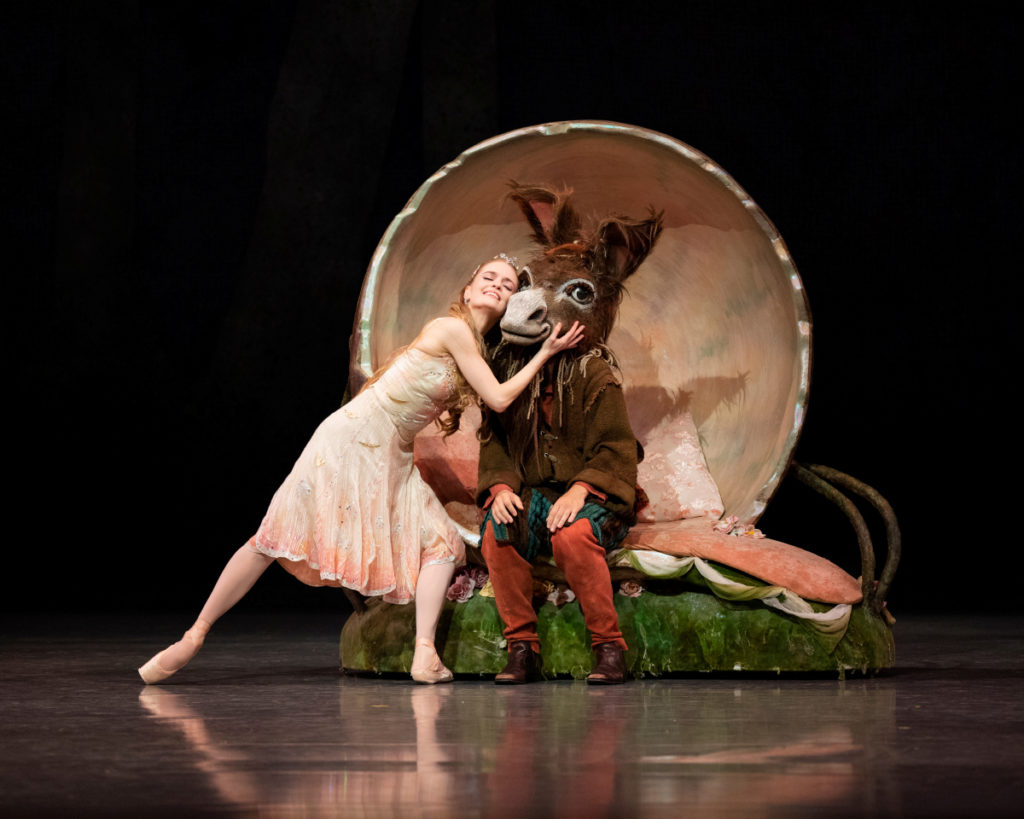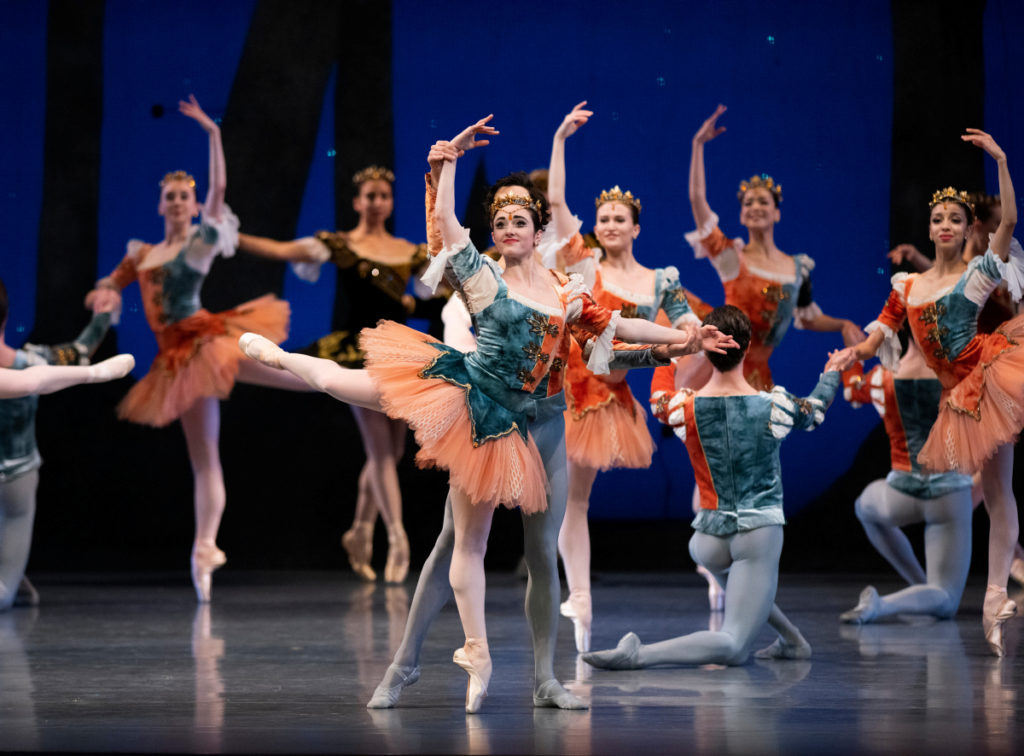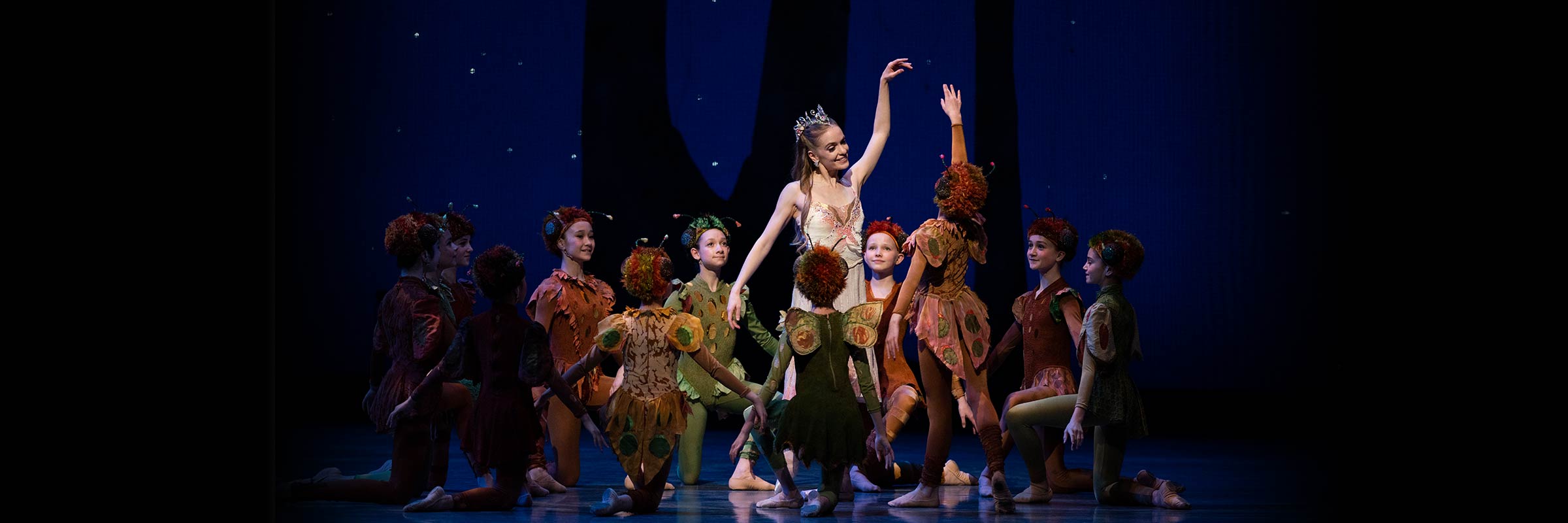Your Ultimate Guide to A Midsummer Night’s Dream
Adventures and Misadventures. Mischief and Magic.
What Is It? A Shakespearean favorite making its triumphant return to San Francisco after a cut-too-short run in 2020. This 1962 work by George Balanchine to music by Felix Mendelssohn was his first original full-length ballet and was quickly hailed as a masterpiece. Balanchine loved the original play—he could recite large parts of it in Russian—so the ballet sticks close to its inspiration, telling the story of four lost lovers in the woods, as well as of a royal fairy court made up of Queen Titania, King Oberon, and mischievous Puck.
In Short: Adventures and misadventures. Mischief and magic. Woodland creatures and fairyland foibles.
Who’s It For? Anyone who loves high fantasy, the pure dance of George Balanchine, or is a sucker for weddings.
What Will I See? Our story opens in a forest outside of Athens on Midsummer Eve.
ACT I

The Plot: The ballet quickly introduces us to three main groups of characters. First up, the fairies: Puck is a mischievous sprite, and Oberon and Titania are the King and Queen of the Fairies, trapped in a battle of wills over who gets to care for a charming changeling child.
Next, we meet the inhabitants of Athens: Hermia and Lysander, very much in love; Demetrius, who also loves Hermia; and Helena, in love with Demetrius. We also, briefly, meet Theseus, the Duke of Athens, and his fiancée Hippolyta, the Queen of the Amazons, as they consider Hermia and Lysander’s request to be married against her father’s wishes. Upon rejecting the request, the lovers run off into the woods, followed by Demetrius and Helena.
Finally, we encounter Bottom, a weaver, and his friends, also wandering the forest on this midsummer night.
As if this isn’t enough activity already, Oberon, interested both in helping out these young human lovers and in getting back at his queen, has Puck bring him a flower pierced by Cupid’s arrow. Why? When touched by this flower, a person falls in love with the first person they lay eyes on. He instructs Puck to make Demetrius love Helena and to play a trick on Titania.
But of course, it isn’t that simple. First, Puck accidentally anoints Lysander, not Demetrius, causing him to fall in love with Helena, and then, attempting to remedy the mistake, anoints Demetrius as well. Now, instead of both men loving Hermia, they both love Helena, confusing and upsetting the entire crew.
Meanwhile, Puck separates Bottom from his group and transforms his head into that of a donkey. (Yes, he’s making an “ass” out of him. Shakespeare’s clever like that.) He puts the donkey-headed man near Titania’s bower, douses her in flower dew, and when she awakens … well, she falls in love with the ass. Oberon shows up just in time to release her from the spell, at which point she’s embarrassed enough to make up with her husband.
As the night drags on, the human lovers eventually wear themselves out with fighting and fall asleep, giving Puck a chance to put all the pairs to right. Theseus and Hippolyta (accompanied by her hounds) find and wake them, and now that everyone’s paired off correctly, they declare it’s time for a triple wedding.
What Should I Look For? The entire plot (five acts in the original play) is condensed down into this single act, so a lot of what you’re looking for is who’s who! But there are a few key dance moments too, especially for the fairies. Notice that Titania and Oberon never dance together, instead, Titania dances with a nameless cavalier in a pas de deux that is full of long, elegant lines, and of course with Bottom, in what must be one of the funniest pas de deux ever choreographed! And Oberon has a solo full of quick jumps and what we call “batterie,” or small beats made with the feet while in the air. This is one of the hardest solos that Balanchine ever choreographed, so don’t miss it! And finally, watch Puck, who moves with quicksilver lightness throughout the whole ballet. Created on Arthur Mitchell, this was one of the defining roles of his career.
ACT II

The Plot: With all the plot in Act I that leaves … a wedding, of course, for Act II! A triple wedding, that is, as Theseus and Hippolyta, Helena and Demetrius, and Hermia and Lysander all tie the knot.
After the wedding entertainment ends, we return to the forest, where we see our reconciled King and Queen of the Fairies. Puck—who brought us into this forest scene—closes out the ballet, as he does the play: “If we shadows have offended/Think but this, and all is mended,/
That you have but slumber’d here/While these visions did appear….So, good night unto you all./Give me your hands, if we be friends,/And Robin shall restore amends.”
What Should I Look For? This act hinges on the Divertissement pas de deux, in some ways, an odd moment when Balanchine inserts an entirely new couple into the action to dance together at the wedding. This duet seems to show everything that the other couples in the ballet don’t have: decorum, grace, equality, mutuality, and respect. Low lifts—never above the shoulder—and careful handholding create a sense of ease and intimacy. A final sweeping backbend suggests a gentle fall into perfect love.
By Jennie Scholick, PhD








